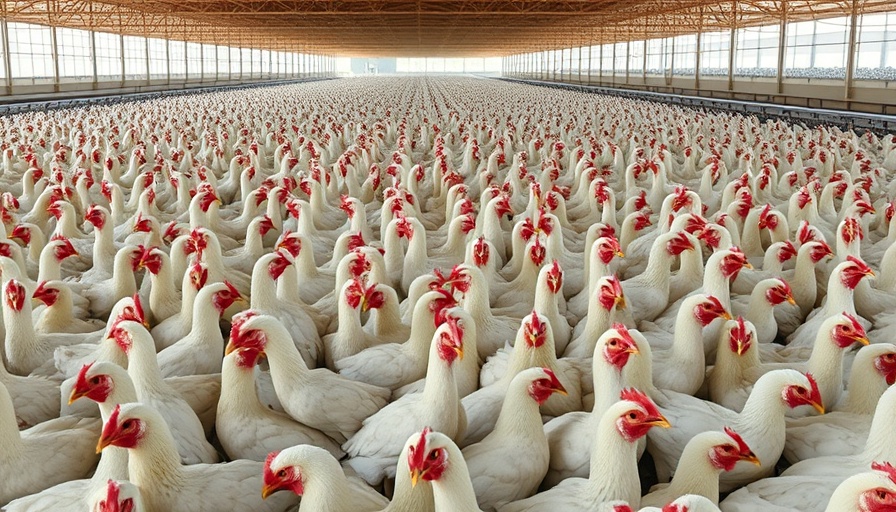
Understanding the Soybean Market’s Crucial Role in Poultry Production
Soybeans are more than just a crop; they're a cornerstone of poultry feed in Southern Africa, directly impacting food security for millions. Rural farmers in Zambia and Malawi heavily rely on soybean production to sustain their livelihoods and contribute to the regional poultry sector. Yet, recent disruptions raise pressing questions—what does this upheaval mean for future food security?
The Impact of Climate Change and Market Dynamics
Climate change looms as a critical disruptor. Zambia, a leading producer, witnessed a staggering 74% drop in soybean output due to insufficient rainfall in 2024. This catastrophic decline reflects not only environmental challenges but also points to systemic issues in market dynamics. With major buyers exerting control over prices, small-scale farmers find themselves caught in a vice of low production and unpredictable pricing, leading to a reinforced cycle of poverty and food insecurity.
Price Dynamics: A Double-Edged Sword
Even as Zambia struggles, Malawi has experienced a different scenario. The country has seen soybean production decrease by 20%, but prices have surged by 48%—surpassing regional benchmarks. While this may seem beneficial at first glance, soaring costs make feed unaffordable for small-scale poultry farmers, undermining their competitiveness against larger operations and further constraining their ability to meet consumer demands.
The Urgent Call for a Collaborative Approach
Experts emphasize the need for a collective response to these challenges. A regional approach could help in addressing market concentration and price manipulation. This collaboration may also pave the way for innovative solutions leveraging technology—such as smart farming and data analytics—to enhance resilience and efficiency within the agricultural sector. The implications of ignoring these recommendations could be dire: stifled poultry production, increased hunger, and more vulnerable economies.
The Human Cost: How This Affects Local Communities
Rural communities are on the brink. For many, poultry farming represents a vital source of income and nourishment. With rising feed costs, families will face hard choices regarding nutrition and livelihood. What does this turmoil mean for the next generation? Without immediate action, many small farmers could disappear, exacerbating already troubling food security issues across the region.
Vision for the Future: Opportunities in Agricultural Innovation
Competition for survival in agriculture invites innovation. Farmers and governments can utilize AI, IoT, and renewable energy technology to modernize production processes and create sustainable farming practices. For example, integrating data analytics in crop management could optimize yields while minimizing environmental impacts. Such strategies may transform the landscape, increasing productivity while ensuring environmental stewardship.
Conclusion: Navigating Uncertain Waters Together
The soybean market's tumultuous state poses significant risks to poultry production in Southern Africa. The complex interplay of climate change, market dynamics, and local realities highlights the urgency of a cooperative strategy that tackles price manipulation and supports local farmers. As stakeholders in this ecosystem, from entrepreneurs to policymakers, we must advocate for innovative solutions to ensure that poultry remains accessible and that communities thrive.
Call to Action: Let’s unite to address these pressing challenges in the poultry sector. Whether you’re an entrepreneur in agritech, a policymaker, or a concerned citizen, your voice can make a difference. Together, we can develop sustainable strategies that support farmers and foster food security in Southern Africa.
 Add Row
Add Row  Add
Add 




Write A Comment